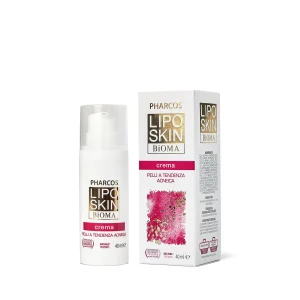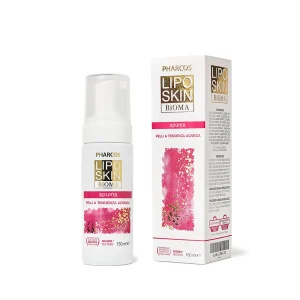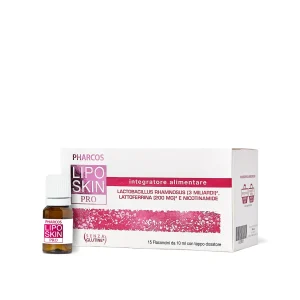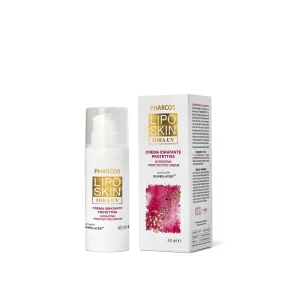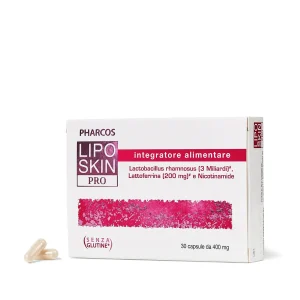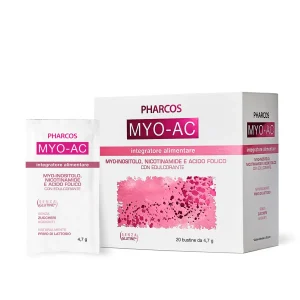Oily skin is a common skin condition characterised by excessive sebum production by the sebaceous glands. This phenomenon can make the skin shiny, oily to the touch and prone to blemishes such as blackheads and acne. While sebum is essential to keep the skin hydrated and protected, an excess can create an environment favourable to bacterial proliferation and clogged pores. But there are several remedies to rebalance the skin and reduce shine and blemishes without compromising its health.
How to tell if you have oily skin
Knowing your skin type in order to be able to choose the most suitable products for your skincare is essential. An easy way to check whether you have oily skin is to carry out a test with a cosmetic tissue. Simply press the tissue or a paper towel gently onto the skin of your face, particularly in the T-zone (forehead, nose and chin). If the tissue is impregnated with sebum, you probably have oily skin. If, on the other hand, the oiliness is only present in some areas while others are dry, you might have combination skin. If in doubt, it is advisable to have a dermatological examination for a more thorough evaluation.
Causes of oily skin
Excessive sebum production can depend on several factors:
- Hormonal factors. During adolescence, increased androgens such as testosterone stimulate the sebaceous glands to work harder, often leading to shinier, acne-prone skin. Even in adult women, hormonal changes related to the menstrual cycle, pregnancy or menopause can influence the amount of sebum produced, with episodes of oilier skin alternating with times of increased dryness or sensitivity.
- Diet and lifestyle. A diet high in saturated fats, refined sugars and dairy products can stimulate sebum production. Foods with a high glycaemic index, such as sweets, white bread and sugary drinks, cause insulin spikes that can activate the production of androgens, hormones responsible for increased sebum.
- Use of inappropriate products: using an aggressive cleanser or a cream that is too rich can alter the skin’s balance, prompting the sebaceous glands to produce more sebum.
- Genetic predisposition: this is one of the main factors influencing skin type. If there are relatives with oily skin in the family, it is very likely to inherit its characteristics. This is because the quantity and activity of the sebaceous glands are partly determined by our DNA.
- Pollution: Daily exposure to smog and environmental impurities can compromise the health of the skin, encouraging the accumulation of residues and toxins on the skin surface and thus increasing acne tendency and the appearance of blemishes. Polluting particles penetrate the pores, clog them and contribute to inflammation, increasing the risk of blemishes, blackheads and pimples. In addition, pollution can alter the skin’s natural hydrolipid film, making it more vulnerable and stimulating increased sebum production as a defensive response.
- Stress: stress has a significant impact on the skin, especially on oily skin. When we are under pressure, our body increases the production of cortisol, a hormone that, among its various functions, stimulates the activity of the sebaceous glands. Moreover, stress can alter the balance of the skin microbiome, encouraging the proliferation of bacteria that contribute to inflammation and skin rashes.
Cleansing and care strategies
To keep the skin healthy and counteract the effects of environmental pollution, it is essential to divide the care routine into different times of the day, making sure to adopt the most suitable treatments for the skin at each stage.
- In the morning: after a night in which the skin has worked to regenerate itself, it is important to start the day with gentle cleansing, using specific products that regulate sebum production without altering the physiological hydrolipid film. Next, it is advisable to apply a light moisturising cream, enriched with provitamin D and peptides of bacterial origin, to rebalance the skin microbiome and protect it from external agents. These creams generally have a mattifying effect, which makes them perfect as a base for make-up.
- Then don’t forget to apply sunscreen, which is essential to prevent UV damage and avoid excessive dryness.
- During the day: if you spend a lot of time outdoors or in particularly polluted environments, it can be useful to use mattifying wipes to absorb excess sebum without altering the skin barrier. In addition, a thermal water spray can help refresh and soothe the skin without weighing it down.
- Evening: this is the time to eliminate all the impurities accumulated during the day. Thorough cleansing can purify the skin in depth without attacking it. After cleansing, an exfoliating treatment or peeling with glycolic acid or salicylic acid can be applied to promote cell renewal and prevent the formation of blackheads. It should be borne in mind that night-time moisturising should be more intense, and a specific night cream with regenerating and rebalancing active ingredients should be applied.
- Once a week: using a purifying mask based on Myo-inositol and Trelose in liposomal form is an excellent strategy for normalising the skin and reducing shine. This treatment helps balance the skin and improve its hydration, giving it a fresher, healthier appearance.
The use of gentle cleansers and sebum-regulating treatments is also essential to manage seborrheic dermatitis, a chronic inflammatory condition often associated with oily skin. This condition is favoured by excessive sebum production and the proliferation of the fungus Malassezia furfur, which causes scaling, redness and itching, especially in areas rich in sebaceous glands such as the scalp and T-zone of the face. Targeted skincare with anti-fungal and soothing shampoos and products helps to rebalance the skin and keep symptoms under control.
Nutrition and supplements for controlling oily skin
A healthy, balanced diet is a key ally in combating oily skin. Here are some suggestions:
- Avoid foods with a high glycaemic index: foods such as white bread, refined pasta, industrial sweets and sugary drinks can cause glycaemic swings that stimulate insulin production, which in turn increases sebum production and skin inflammation. It is preferable to opt for whole grains, legumes and vegetables with a low glycaemic index to keep blood sugar levels stable.
- Consume antioxidants and essential vitamins: fruits and vegetables are rich in vitamin C, vitamin A and E, powerful antioxidants that help fight oxidative stress and keep the skin brighter and more balanced. Carrots, peppers and citrus fruits are good sources of beta-carotene, useful for cell regeneration.
- Take quality protein: protein is essential for skin regeneration. It is best to choose lean sources such as chicken, fish, eggs and legumes, avoiding processed red meat which can contribute to inflammatory processes.
- Increase fibre consumption: foods rich in fibre, such as fruit, vegetables, pulses and seeds, promote intestinal health by reducing the risk of skin rashes.
- Drink plenty of water: hydration is essential to keep the skin supple and promote the elimination of toxins. Drinking at least 2 litres of water a day helps keep the skin fresher and less prone to oiliness.
- Limit dairy products and processed foods: Dairy products, especially those high in fat such as aged cheeses and whole milk, can stimulate the production of hormones that promote oily skin and acne. Highly processed foods rich in preservatives and additives can also have a negative impact on the skin.
Food supplements can be a valuable support for those with oily skin, as they help rebalance sebum production and improve the appearance of the skin. Ingredients such as Lactobacillus rhamnosus and lactoferrin support the well-being of the intestinal microbiome, which is closely linked to skin health. In addition, nicotinamide contributes to the maintenance of normal skin through its soothing and sebum-regulating properties.
Common mistakes in the management of oily skin
Although the temptation to get rid of the shiny effect right away is strong, some habits can actually make the situation worse:
- Washing too frequently: washing the face more than twice a day can excessively remove sebum, stimulating even more production.
- Use of products that are too aggressive: even alcohol-based cleansers or degreasing soaps can compromise the skin barrier. This can lead the skin to react with a rebound effect, i.e. an even greater production of sebum in an attempt to restore its balance, thus aggravating the problem.
- Not moisturising the skin: many people with oily skin avoid moisturising creams, but, as we have said, skin that is too dry can increase sebum production as a compensatory reaction.
- Excessive sun exposure without protection: again, if one exposes oneself to the sun without adequate protection, the skin reacts by increasing sebum production to defend itself against irritation.
As we have seen, managing oily skin requires consistency and the adoption of a suitable skincare routine. The combination of gentle cleansing, the use of sebum-normalising active ingredients and a balanced diet can make all the difference in improving the appearance of the skin.
Sources:
https://www.adoi.it/wp-content/uploads/2023/08/OK09_DERMATITE-SEBORROICA.pdf
https://pubmed.ncbi.nlm.nih.gov/22722766
https://www.aad.org/public/everyday-care/skin-care-basics/dry/oily-skin





